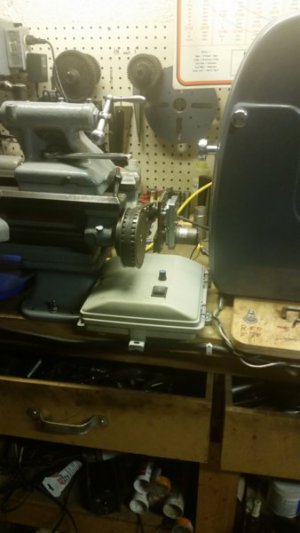It not only eliminates the noise and wear on the gear train, it makes it very simple to change and fine tune a feed rate for older lathes that do not have a quick change gearbox. The gear train is only necessary to cut threads, keeping the spindle in sync with the lead screw. For general turning, it is a pain to have to manually change gears over to set a specific feed rate. By driving the screw electrically, one can control the speed from a pot.
It is as simple as disconnecting the gear train by moving the banjo out of the drive line, moving the feed direction lever to neutral and then using the electric motor to turn the screw.


